Image Quality Analysis - AA in the driver, sample patterns and performance
The driver, along with the new AA modes, has a couple of different application types for those. "Enhance the application setting" is used to add support for 8xMSAA and coverage sample AA to applications that don't enumerate the new 8xMSAA mode despite the driver providing the correct information to Direct3D and OpenGL, and can't ask for CSAA via either API anyway. With that setting you choose a desired AA mode in the control panel and then set any MSAA mode in your application. The driver detects when AA is being asked for and applies the level you set, not that the application asks for.The "Override any application setting" version just applies the AA mode via brute force regardless of what the application is setup for, rendering wise.

MSAA Sample Patterns
G80 doesn't expose any programmability (at least via either main API) for its AA sample positions, sticking to arranging the multisamples around a 16x16 grid. Each of the maximum 8 multisamples has a discrete X and Y plane compared to all others, giving rise to a full 8x8 EER. Here's what we mean.2x
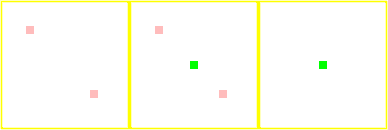
4x
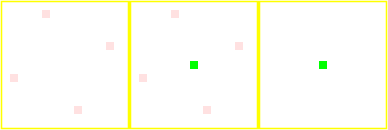
8x
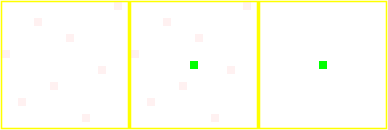
AA performance
We measured AA performance using one D3D9 game and one OpenGL game, both at 1920x1200, to see what the performance hit was for each mode compared to the 0xAA case.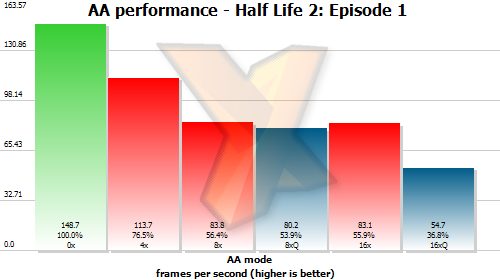
Performance here scales mostly as a function of all the depth sampling that needs to happen per pixel for each of the AA modes. CSAA isn't free here.
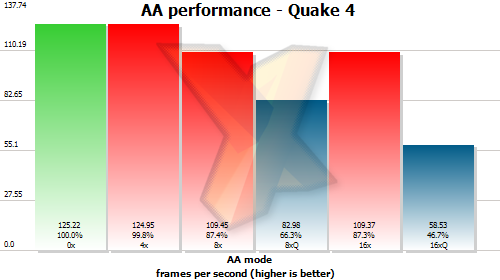
Whereas CSAA appears to be mostly free here largely because it's only working for a small section of screen pixels due to Quake 4's shadowing solution. Lots of stencil updates per pixel means CSAA has to be disregarded for a large count of the pixels being rendered. And of course G80's colour-only rate will do nothing but help after the shadow pass in Q4's engine.
The hardware also supports transparency AA as the last generation did, with the associated performance hit for sending data back around for extra samples, depending on what's being applied to the pixel. We don't measure that hit for this piece, but will do so for a later post-launch analysis of some extra bits we've missed.









